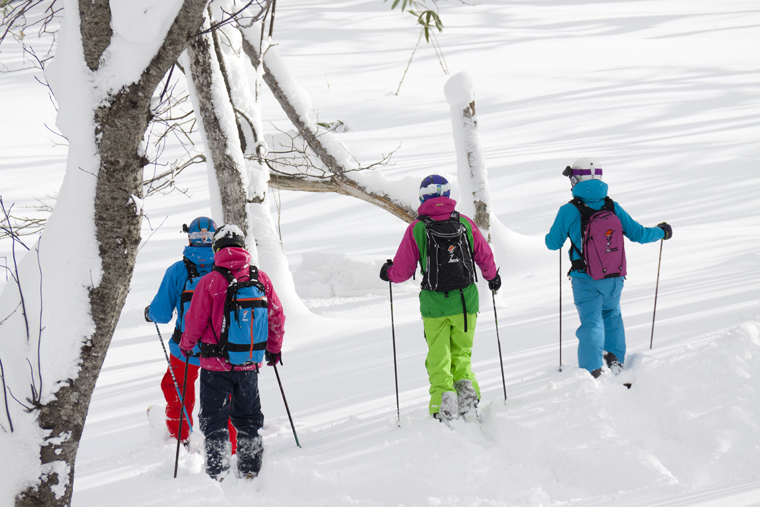Learning backcountry basics in the world’s snowiest spot


It has long been a guilty secret. And you really can’t work for a magazine like Fall Line and know bugger-all about the backcountry. Or can you? I’ve made a pretty good fist of it for the past 10 years, borrowing beacons, shovels and probes as I go. All the while grunting appreciatively during those five-minute serious meetings that guides hold before leading you onto stupidly steep, outside-the-ropes terrain.
Don’t get me wrong: I’m not a total off-piste plonker. And in theory I’m well informed having spent two years proofing and commissioning the Backcountry section of this magazine. I’ve even been known to do Boeing 747 impressions to try and get my head round our guiding guru Martin Chester’s many, many aeroplane analogies. Lock onto landing area, move closer to the snow as your transceiver signal strengthens, etc, etc…
But in practical terms? Let’s just say there’s room for improvement. Which is why Hanazono’s Powder Dayz course appealed. With Niseko’s only resort-run backcountry operation promising great guiding, plus a little bit of learning, in one of the snowiest places on earth, what’s not to like?
Waiting for Joe Sugano, head of Hanazono Powder Guides, at 6.40am outside Seicomart supermarket in Hirafu (Niseko’s main town), I did rather wonder what I’d committed to for the next five days. No one was about and I felt about 90, having only flown in from the UK the evening before… On the plus side, it had been chucking down snow all night, and was now shin deep, something Joe happily demonstrated as he struggled to get out of the car park, wheel-spinning as we went.
Ten minutes and a few minor slides later, we were at the modern, compact Hanazono base – one of four interconnected resorts in Niseko – signing waivers, checking beacons and meeting the rest of the group.
The plan with Powder Dayz (and its mighty 25 hours of guiding/tuition) is always to start skiing by 7.30am, giving the group, in our case five, including two guides, a full hour of powder before the lifts open and the free-for-all begins. After the briefest of safety chats at the top of the Hanazono hooded quad, we were off, ripping down Strawberry Fields. Whether it’s like this every day, who knows? But given the conditions, with getting on for a metre underfoot (incredible, I know, but this is why I travel all this way every season) I don’t blame Aussie guides Matt and Pete for not wanting to hang about.
That said, the key backcountry basics are always enforced – one at a time, stop at a safe/protected point, know your line, always have your avi kit (‘and bloody turned on!’ as Matt succinctly put it). But it’s done with such a light touch you never feel lectured. Or bored.
The sessions build and build, too. In my case, day one involved huge amounts of sidecountry pow and access to some of the more straightforward gates, which Niseko operates to offer controlled off-piste. Day two was more advanced, with a well-known peak hike being tackled together with the most incredible waist-high pow descent. Then on day three, Joe took me up solo, exploring lesser known, and more ambitious round-the-back routes, like the loop to neighbouring Annupuri resort.
What I particularly liked was the easy-going way you’re cheerfully tutored, with a ‘just try this’, or ‘look at what that skier’s doing wrong’ approach, rather than the total technique-nuking that some idiot instructors seem to delight in. It never feels like you’re being watched or assessed either. More like skiing with friends who are simply much better than you. But it’s funny how the level goes up and up if you can take it.
I’ve a distinct, and weirdly happy memory of Joe, at one stage, on day three or four, getting me to bend double in the howling wind and double check my transceiver, so serious was the risk in Niseko’s back bowl. OK, it was clearly not that bad, as he’d taken me there, but enough to get to the bottom and see a minor avalanche just skier’s left of where we’d been 10 minutes earlier. Cue discussion on what to look out for and why he’d felt uneasy. And that’s why it’s nice to have a guide. And learn from them. I’ll be back this winter.